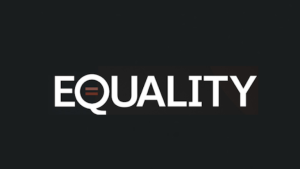This year has been incredibly challenging — as our world struggles with intersecting crises, the senseless and disproportionate loss of Black and Brown lives in the pandemic has amplified inequalities in our communities, demanding that each of us look within to see our own racism and bias and take action to bring change.
As a Black man and tech leader, I grapple with what it means to lead in an industry with a long history of underrepresentation of minorities. While I’m grateful to work at a company committed to driving racial equality in our workplace and communities — with Equality as one of our highest values — it’s clear that we need to do more, faster.
In an effort to advance accountability, I’m sharing an update on some of our recent commitments and programs to build a more inclusive workplace. Beginning with this post, Salesforce will now provide quarterly updates on our commitments and programs to advance Equality.
Accelerating progress with inclusive practices
Earlier this year we announced new leadership and overall representation goals, committing to double the U.S representation of Black employees in leadership (VP+) and increase our U.S. representation of Black employees by 50% by the end of 2023. This joins our existing goal to have 50% of our U.S. workforce made up of underrepresented groups by 2023.1
The Salesforce employee base is 50,000+ strong — these goals are significant not just because of what it says about our commitment, but for the sheer scale of the work ahead.
We’ve also made an important change to my role. When I joined Salesforce as its first Chief Equality Officer, we saw an opportunity to meaningfully increase the impact of the company’s equality work, which has long been an important part of the fabric of our culture. Over time, it became clear that to truly accelerate our progress, it was critical that we take an inclusive lens to our entire recruiting and employee experience. As a result, in May, we brought together the Office of Equality and Recruiting within my new role as Chief Equality and Recruiting Officer. And we are taking action, specifically:
- Diversity recruiters: We launched a diversity recruiting team dedicated to sourcing talent from underrepresented minority (URM) communities, and partnering with our core recruiters to widen access and build diverse candidate slates.
- URM referrals: We’ve instituted a pilot URM referral program to create a fair, equitable, and inclusive candidate experience, and to enable our recruiters and managers to address and mitigate possible biases that can emerge during the hiring process.
- Deepening our network: We’re deepening partnerships with underrepresented professional organizations, such as the Black Professionals in Tech Network (BPTN), National Sales Network, Latinas in Tech, and Women in Technology International.
- Competency based interview feedback: We are leveraging the Salesforce Interview Feedback Tool (SIFT), a standardized set of questions that are mapped to the competencies for each role to help mitigate bias in the interview process.
- Recruiter Bias training: As the frontline for Salesforce candidates, all recruiters and sourcers have received a new training on competency-based interviewing, spotting and addressing biases, and microagresssions, and intentional interventions.
- Increasing accountability: We’ve revamped our scorecard program — a monthly program where senior leaders receive a scorecard detailing the headcount, hiring, attrition and promotion data by gender (global) and race (U.S) — to add more data and help drive accountability. We’ve also paired senior leaders with an Equality board made up of their recruiting, employee success, Equality partners, and senior leaders to drive prescriptive actions based on data.
Nurturing and growing our future diverse leaders
Once at Salesforce, it’s critical our underrepresented talent thrives. We have recently launched the following new initiatives to help make sure employees feel seen, heard, valued and empowered to succeed:
- Development: We are investing in empowering our future diverse leaders through an expanded partnership with the Executive Leadership Council on an in-house program focused on underrepresented minorities (Black, Latinx, and Indigenous).
- Mentorship: We’ve expanded our Equality Mentorship program to pair Black employees with executive mentors to help navigate their careers. This initiative was first created by BOLDforce, Salesforce’s employee resource group (ERG) for the Black community and their allies, and later adopted by Asiapacforce, the ERG for the Asian Pacific community and allies, to help increase access to senior leadership and support career growth for these groups.
- Support: We’ve launched the Warmline, an employee advocacy program to help support and empower women and Black, Indigenous, and LatinX employees. It’s a place to have confidential conversations with an advocate focused on belonging, equity, and career navigation.
- Growth: We have rolled out a new, Inclusive Promotions process and training that all managers are required to complete ahead of promoting any talent. We have also engaged a world-class consulting firm to conduct a third-party assessment of all our people processes.
- Allyship: In the past quarter, our employee resource groups grew 15%, with half of our full-time employees in an employee resource group. BOLDforce, our Black Employee Resource Group, drove a bulk of this growth.
We certainly don’t have all the answers, and we still have significant work ahead, but we remain optimistic about our future and want to be transparent around the challenges we face, actions we are taking and progress over time. In November, we’ll share our next update, including our annual Equality data update.
1 We define Underrepresented Groups as Women, Black, Latinx, Indigenous, Multiracial, LGBTQ+, People with Disabilities, and Veterans.


















